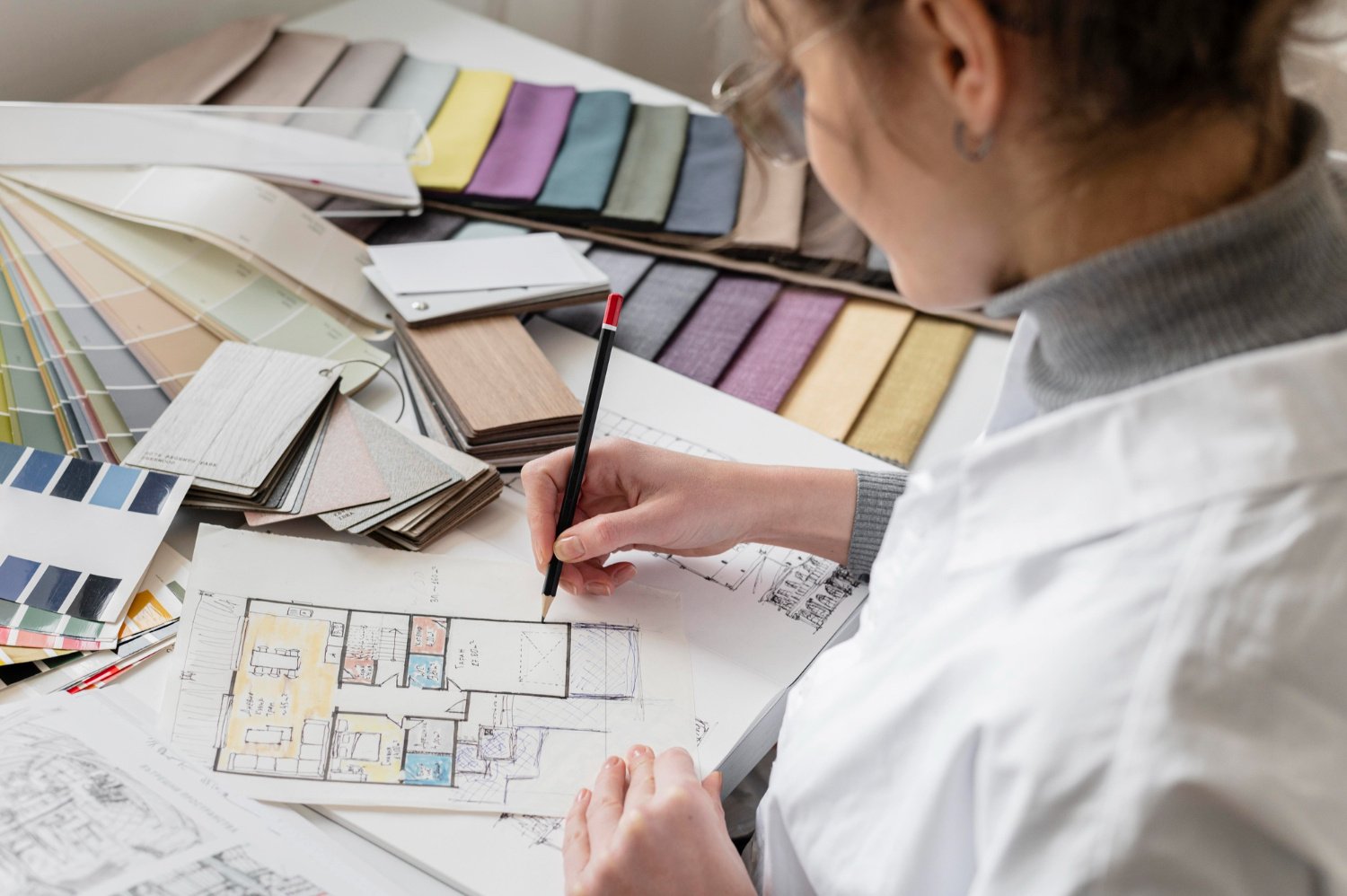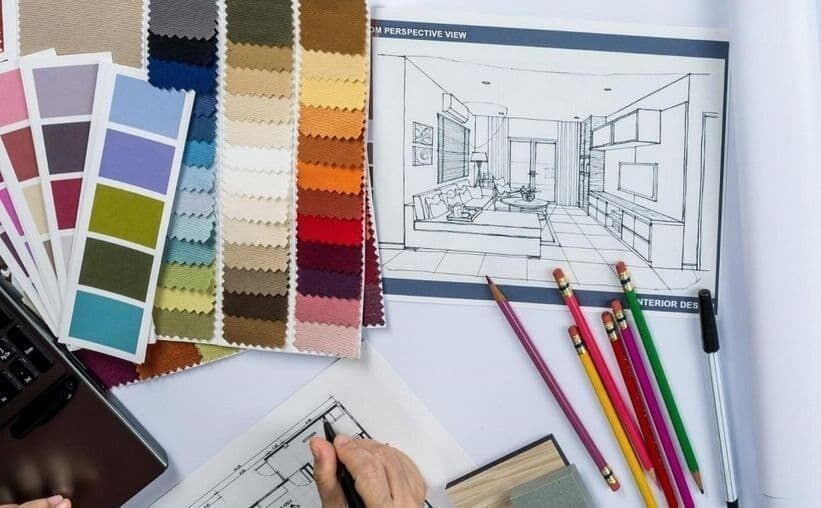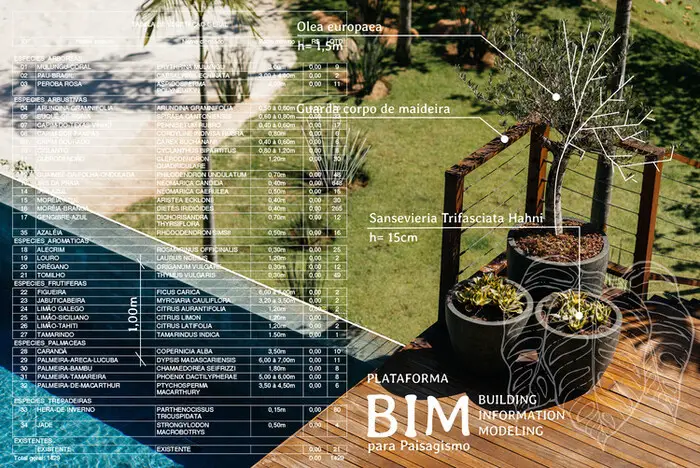Top 5 Online Courses for Interior Designers to upskill in India 2026

Table of Contents
Interior design in India involves cultural heritage, modern technology, and innovative trends passed over centuries in the architectural evolution. From the decorated palaces of Rajasthan to the minimalist urban dwellings of Mumbai, every space tells a story of aesthetic evolution and cultural adaptation.
India has undergone a fast-growing economy and urbanisation in the past few years, with a taste for luxury and refinement. It has pushed the interior design industry in India to be more creative, where designers take inspiration from India's rich history, diverse cultural tapestry, and global design influences.
India is a combination of traditional craftsmanship, cutting-edge technology, and sustainable practices. Interior designers explore innovative and sustainable materials with developing technologies to create pleasing and environmentally feasible spaces with good aesthetics. India is a constantly developing global design hub. Its future promises to make the space dynamic and inspiring with the help of interior design by embracing diversity, creativity, and sustainability.
Significance of Upskilling in Interior Design
Upskilling in interior design is crucial for staying competitive in the industry, enhancing creativity and service offerings, building credibility, and personal growth. Upskilling in interior design is essential for several reasons:
- Interior designers may provide clients with cutting-edge and modern solutions by upskilling themselves to stay abreast of the newest trends, materials, and processes. Interior design trends change quickly.
- Upskilling and constant learning assist interior designers hone their design abilities. This includes picking up new software, expanding their understanding of design concepts, and producing high-calibre designs that satisfy clients.
- Acquiring knowledge in the latest innovations such as Building Information Modelling (BIM), Virtual Reality (VR), and Augmented Reality (AI) gives designers the tools they need to effectively communicate ideas, visualise designs, and streamline project processes.
- Upskilling in specialised areas like sustainable design, universal design, or hospitality design can help interior designers identify themselves in a competitive field, increase their service offerings, and grab new market opportunities.

Role of an Interior Designer
An interior designer's job description includes a broad range of duties to design safe, aesthetically beautiful, and useful indoor environments. These are a few essential facets of their role:
- Examine and assess the available areas to maximise layout and functionality while understanding the needs of the inhabitants, traffic flow, and spatial linkages.
- Create design concepts based on the needs, preferences, and project scope. Use mood boards, sketches, and 3D renderings to make good concepts.
- While selecting materials, finishes, furniture, and fixtures for the room, keep sustainability, maintenance, and durability in mind. You should also take the design concept, cost, and utility into account.
- A space's functional needs should be taken into consideration when selecting lighting, furniture, accessories, and artwork. Don't forget to consider scale, proportion, and stylistic coherence.
- Manage project budgets, timelines, and schedules coordinating with contractors, architects, and other specialists to ensure that design standards are applied accurately and efficiently.

Why Should I Pursue an Interior Design Course?
There are several reasons to pursue interior design courses. It will help you get the knowledge and learn new skills and credentials which are needed to succeed in this dynamic and competitive industry.
1. Skill Development
Interior design courses focus on developing important skills such as spatial planning, colour theory, and material selection. These skills are used to create aesthetically pleasing and functional spaces, giving you a solid toolkit for success in the field. After pursuing interior design courses, many career opportunities widen in residential, commercial, and sustainable spaces. With the increasing demand and innovation for well-designed spaces, the need for skilled interior designers is also growing.
Also Check out: 20 Famous Architects Who Transformed Architecture
2. Industry Relevance
An interior design course is designed to align with industry standards and trends. It makes sure that you stay updated on the latest technologies, materials, and design methodologies, making you a valuable asset in a competitive job market.
3. Professional Networking
Courses provide opportunities to network with experienced professionals, mentors, and peers. Building connections in the industry can lead to internships, job opportunities, and collaborations, enhancing your career prospects and providing real-world insights.
Choosing the Right Interior Design Course
Choosing the right interior design course is crucial to ensure you stay competitive in the market. You must choose the best interior design course based on the following four major criteria:
1. Course Content
The course content is the most crucial criterion to consider when choosing a course. You must look at the course content in-depth to ensure all important and relevant topics are covered. This will ensure the course is up-to-date and you will learn the most latest and advanced concepts and technologies in the industry to stay competitive in the market.
Ensure the course's content comes with a mix of theoretical and practical learning for you to gain a strong hold on concepts and have hands-on experience on tools and software.
2. Mentor Experience and Qualifications
The mentor's background and credentials have a big influence on how well the course is. Look for a teacher with industry experience. They must have a substantial body of work in their portfolio and be able to offer examples from the actual world as well as industry insights. A competent teacher will be able to help you navigate the course material and offer tailored advice and encouragement.
3. Learning Format
Another important consideration to take into account is the course's learning format. While some courses are more difficult and call for a higher degree of knowledge, others are more structured and geared for novices. Take into account your preferred method of studying and select a course that suits it. For instance, choose a course involving practical exercises and projects if you learn best by doing. Seek a course with online resources and video lectures if you would rather learn at your own pace.
4. Accreditation and Reputation
It's important to take the course provider's reputation and accreditation into account. Learn about the course which is approved by a reputable trade association. A well-respected organisation's accreditation can give your interior design course more substance and boost your credibility as a qualified professional. Search for a course that is recommended by seasoned professionals and has a positive business reputation.
Top 5 Interior Design Courses
1. Interior Design & Future-Tech By Novatr
Duration: Six months
Mode: Online
The Novatr Interior Design & Future Tech program is a state-of-the-art, online interior design course offering certification. This unique postgraduate program, led by industry specialists, integrates interior design with cutting-edge technologies like BIM, AR/VR, and AI-powered tools. Participants can specialise in one of three fields: mastering BIM & Revit, 3D visualisation, or product design, which equips them to handle projects, produce stunning visuals, or innovate products. The program emphasises building impressive portfolios and provides valuable insights into networking, freelancing, and job readiness, positioning students for freelance and professional careers alike.
2. Certified Interior Design Course By AND Academy
Duration: 18 weeks
Mode: Online
Curriculum:
- Elements & Principles of Interior Design
- Understanding the functionality of spaces
- Introduction to Ergonomics & Anthropometrics`
- Understanding Client needs
- Understanding 3D Form & Space
- Software Track: 3D modelling (Coohom)
The Interior Design Courses at AND Academy will teach you how to visualise, plan, and design interior spaces. You will learn principles of spatial design, selecting materials, and collaborating with teams to bring your designs to life. The course covers various contexts such as residential, workspace, hospitality, retail, pop-up stores, and exhibitions. Career opportunities include working for firms or starting your practice. Additionally, you can work as a stylist for lifestyle products or delve into event and exhibition design with your spatial design skills.
3. Interior Design and Architecture Planning By DU Sol
Duration: 10 months
Mode: Online
Curriculum:
- Foundational Knowledge of Drawing and Sketching
- Geometry Concepts and Colour Wheel
- Planning and Drawing a Layout of the Basic Room
- Overview of Technology
- Basics of Vastu
- Budget Management
The Interior Design & Architecture Planning course at the Campus of Open Learning, Delhi University and RK Academy of Arts and Design offers training in interior design and architecture planning. The program is in high demand, providing opportunities for skilled learners to excel. The creative field requires expertise and dedication. Interested students must submit an application form with the required documents for screening and admission.
Also Check out: How Automation in Construction is Leading the Way for the AEC Industry
4. Interior Design Certificate Course By Upskillist
Duration: 16 months
Mode: Online
Curriculum:
- Diploma in Interior Design
- Intermediate in Design
- Advancement in Interior Design
- Proficient in Interior Design
The Interior Design Course Online is a professional design program by Upskillist in the 'Continuing Education' category. Certified by AP State University, it consists of 4 modules with smaller sections for learning ease. With various support options and expert lessons, this course covers design project creation and management. Classes are flexible, exams and assessments ensure understanding, and there are weekly assignments along with module-end tasks for an e-diploma upon completion.
5. Interior Design Certification Course by INIFD
Duration: 10 months
Mode: Online
Curriculum:
- Design Source & Materials
- Interior Construction and Detailing
- Fundamental of Interior Graphics (including visual presentation)
- Interior Design Studio I – Residential Space
- Art and Architecture History – I
- Interior Service Systems
- Interior Design Studio II - Office Space
- Interior Design Studio III - Retail Space
The INIFD curriculum stays current with industry trends and trains students to exploit emerging opportunities. Students will learn to design layout, construction, colour schemes, furniture, and decorations for different properties. Expect a variety of interior design classes for both beginners and advanced learners in Pune. These courses are designed to give you the skills to create functional and beautiful spaces for your clients.
Conclusion
The interior design business is driven by creativity and innovation due to the growing desire for luxury and refinement resulting from India's urbanisation and economic progress. While gaining new abilities in interior design is helpful, it's also essential to maintain competitiveness in this ever-evolving industry. Enrolling in interior design programs can assist people in gaining the fundamental knowledge of colour theory, material selection, and spatial planning, opening up a wide range of job options in the residential, commercial, and sustainable design industries.
Choosing the appropriate interior design course is essential for a whole educational experience. Considerations must be made for elements including course content, instructor experience, learning style, accreditation, and the standing of the course provider. The top five interior design programs provide distinctive curricula, focused concentrations, and bright futures for graduates. Diverse interests and career goals in the discipline are catered to by these courses. The future of interior design is bright and full of inspiration, especially as India becomes a global centre for design. The building and construction sector may produce environments that showcase the nation's cultural diversity and make a positive impact on the environment and aesthetics by welcoming diversity, encouraging creativity, and placing a high priority on sustainability.
For interior designers, Novatr offers a BIM Professional Course for Architects who are instructed by industry professionals with years of practical expertise in the field. Learn 8+ software, work on live capstone projects, and build a portfolio. Check out our Resources Page to learn more about related careers and software.


 Thanks for connecting!
Thanks for connecting!
-1.png)



.png)



